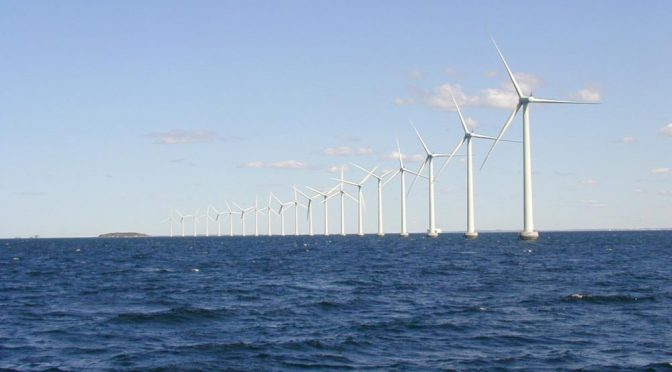American offshore wind power promises a long-term boom in job creation and U.S. investment, with up to 83,000 jobs and a brand new domestic supply chain possible over the next decade. Offshore wind is exactly the kind of once-in-a-generation opportunity our country needs to take advantage of as our economy recovers from the COVID-induced recession. However, this week Congress may pass burdensome new requirements that could stifle this progress.
Congressional leaders are considering expanding the Jones Act, a law that has been on the books for over a century and is meant to protect the domestic shipbuilding industry and U.S. merchant sailors. The Jones Act requires that any goods shipped between U.S.-based points be transported on a U.S.-flagged and- crewed vessels. The U.S. offshore wind industry supports the Jones Act and strives to create opportunities for American workers and businesses wherever and whenever possible.
Now, however, Congress is considering expanding the Jones Act to cover construction at sea, meaning heavy-lift installation vessels used to build an offshore wind project must be U.S.-flagged provided the Department of Transportation determines such vessels exist and they do not grant a waiver from the requirements due to lack of availability or suitability of existing vessels. Because offshore wind projects are extremely large infrastructure projects, they require very specialized equipment and not a single U.S.-flagged vessel currently exists that could perform the heavy lifting and installation activities needed to construct the current generation of offshore wind turbines. And there’s no quick way to increase the availability of these specialized vessels –such vessels take years to manufacture and cost hundreds of millions of dollars. Not only are there no U.S. flagged heavy-lift vessels, there are only a handful in the entire world that meet the necessary criteria for installing offshore towers and blades.
While the current lack of an existing U.S. flagged vessel and a waiver process to provide relief from the requirements should future availability be a problem might lead some to conclude this proposed change in legislation will have no impact on the offshore wind industry, quite the opposite is true. The legislation will have a significant and immediate chilling effect on the offshore U.S. wind industry just as it is about to take off.
Because there are only a handful of heavy-lift installation vessels in the world capable of doing the work needed for the offshore wind industry, a limited seasonal window for construction, and the multiple years of construction required for infrastructure projects the size of offshore wind, developers must secure an available heavy-lift installation vessel years in advance. If the proposed legislation becomes law, developers will no longer be guaranteed that they can use the scheduled vessels. Developers will be unlikely to spend time and money to permit a project without a guarantee they’ll have access to the equipment needed to build it. And even those that want to move forward despite the uncertainty will have a hard time securing financing if they can’t provide assurances, they will be able to complete work as planned and meet project timelines.
If we want to keep U.S. offshore wind development on track and bring the billions of dollars in investments and tens of thousands of jobs to the U.S. we cannot add additional uncertainty at this critical point in the industry’s development.
Offshore wind will mean business for U.S. mariners and vessels—at least 18 different kinds of vessels are needed to construct and maintain an offshore wind farm, and U.S.-flagged vessels are available for the vast majority. Tugs, barges, crew transfer vessels, feeder barges and more are all abundant U.S. ships that offshore wind will put to work.
It’s only a select few of the world’s most specialized vessels that will be needed from elsewhere, and if the U.S. offshore wind market is allowed to thrive, eventually U.S. firms will manufacture those ships domestically as well. In fact, a U.S.-flagged vessel was recently commissioned, but it will not be ready until 2023. This proves the market can drive these investments and a statutory change is not needed. But for the market to open up further, companies need evidence of a long-term market for these vessels before making the significant capital expenditure necessary to build them. Companies need to see offshore wind projects get through the federal permitting process in a timely way and move into construction. It would also be helpful if there was a longer-term vision from federal regulators on further offshore wind leasing areas.
Offshore wind can put Americans back to work and revitalize coastal and port communities up and down our shorelines. It can play a major role in our post-pandemic recovery, but in order to realize offshore wind’s promise, Congress cannot impede progress with excessive regulation.


